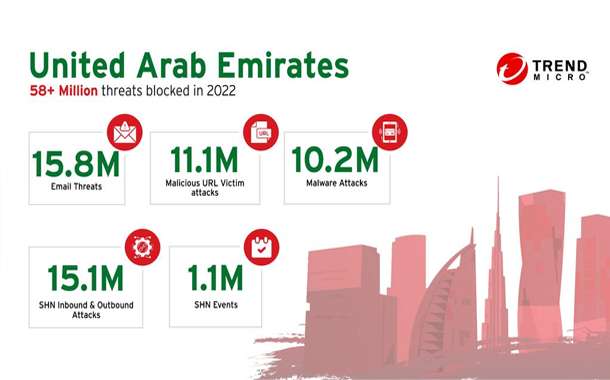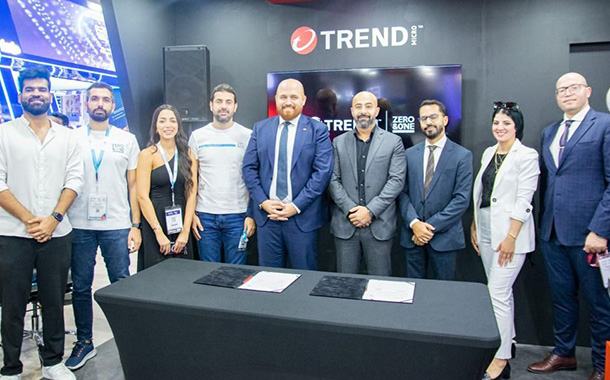Trend Micro predicts that ransomware groups will increasingly target Linux servers and embedded systems over the coming years. The latest Trend Micro 2022 Midyear Roundup Report recorded a double-digit year-on-year (YoY) increase in attacks on these systems in H1 2022.
Detection of attacks from ransomware-as-a-service surged in the first half of 2022. Major players like LockBit and Conti were detected with a 500% YoY increase and nearly doubled the number of detections in six months respectively. The RaaS model has generated significant profits for ransomware developers and their affiliates. According to the data, Trend Micro blocked 63 billion threats in H1 2022, there were 52% more threats in the first half of the year than in the same period in 2021, while government, manufacturing, and healthcare were among the top three sectors targeted with malware.
In the UAE, Trend Micro solutions detected and blocked over 15 million email threats, prevented more than 11 million malicious URL victim attacks, and over 122K URL hosts. In addition, over 10 million malware attacks were identified and stopped.
The report also highlights the ongoing risks of remote and hybrid work and learning environments. Backed by Trend Micro’s Smart Home Network (SHN) solutions, the UAE blocked a total 15 million SHN inbound and outbound attacks and prevented over 1 million SHN events for hackers to target or control home devices from executing malware, obtaining sensitive information, intercepting communications, or launching external attacks.
“While the findings of our midyear report are alarming, they highlight the modern sophisticated cyber criminals emerging in the UAE, urging organizations in the country to re-evaluate and protect their digital assets,” said Majd Sinan, Country Manager, Trend Micro UAE. “This is why it is critical for enterprises to utilize these latest insights that can significantly strengthen their efforts of safeguarding digital infrastructures against threat actors and their illicit activities.”
There are new ransomware groups emerging every day. In the first half of 2022, Black Basta was the most notable. Even though SMBs are a more popular target, many threat actors tend to go for large corporations. Vulnerability exploitation is a common ransomware attack vector. Unpatched vulnerabilities contribute to a growing digital attack surface that many organizations are struggling to secure as hybrid workplaces expand their IT environment. More than two-fifths of global organizations (43%) believe it is “spiraling out of control.”
Furthermore, cloud visibility is crucial given the persistent risk posed by third parties using methods like cloud-based crypto mining and cloud tunneling to exploit misconfigured environments. Threat actors frequently use the latter to host phishing websites or route malware traffic.



















